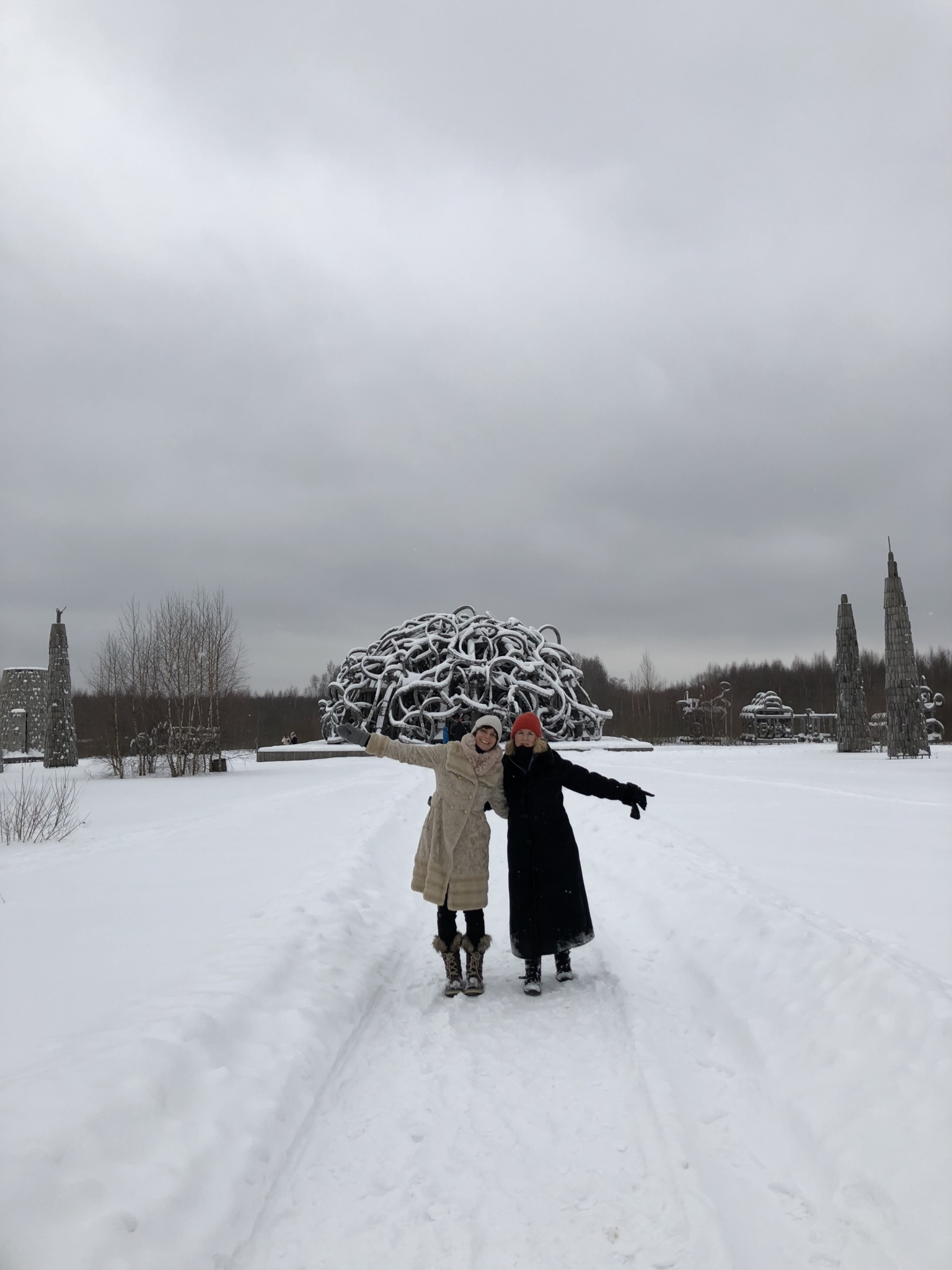
Last month, Burning Man CEO Marian Goodell, her indomitable assistant Kelly Anders and I traveled to Moskva. A city rich with history and modernity, arts and culture, conflict and progress, Moscow is the capital city of a country that has withstood tremendous and tumultuous change over the past century.
Marian was invited to speak at a conference hosted by some of the same folks that produce the Synergy Global Forum. Attendees included event producers, promoters, artists, representatives from Moscow’s Ministry of Culture, and others interested in exploring new ways of thinking about event production. “A great event is anything that promotes creativity and being yourself,” Marian said in an on-site media interview after her talk. “So when you leave the event, you want to be that way in the rest of your life.”
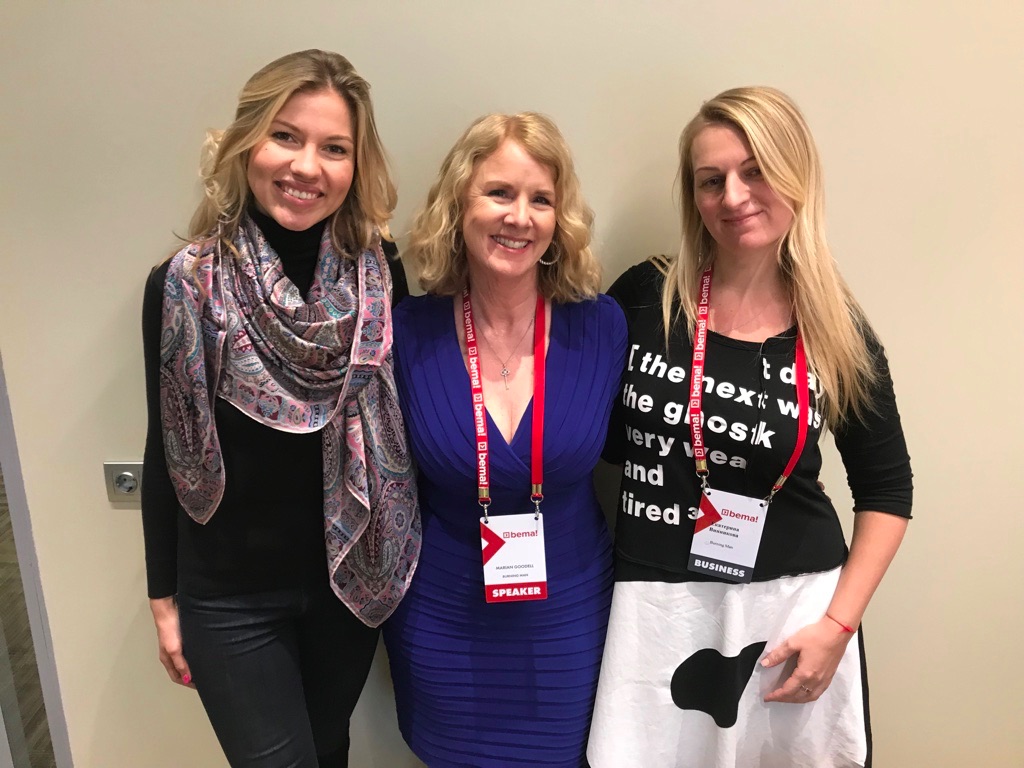
This wasn’t the first time Burning Man has been invited to speak in Russia. Arts Advocate $teven Ra$pa and Co-lead of the Central Arts Team Jeremy Crandell traveled to Moscow where Ra$pa gave a keynote talk about creative placemaking and cultural vitality at the 2017 Moscow Urban Forum. And in 2014, Regional Network Associate Director Meghan Rutigliano spoke at the Strelka Institute for Media, Architecture and Design.
In addition to the speaking engagement, we were delighted to have a few opportunities to connect with local Burners.
Finding Our People
Moscow Regional Contact Katya Vinnikova, our intrepid host and friend, is a bright light. It doesn’t take long to recognize how special she is. A creative, dedicated, and thoughtful leader, Katya is guiding her community through a time of transition. She first traveled to Black Rock City in 2007, and has been in her leadership role for five years.
In those five years, the Russian Burner community has grown considerably, leading the build and burn of Black Rock City art installations like Cradle of Mir in 2013 and Own Way in 2015, and establishing major theme camps at Black Rock City and other regional events. Like many Burning Man communities in a growth phase, they are faced with challenges related to capacity, resources, and the tension that arises between some of the principles when you take them “off the playa and into the world.”
By the third year of Moscow’s Decompression (2016), attendance had grown to 4,000 people strong (check out stunning photos and reflections in Anna Skaya’s recap for the Journal). And Russian Burners aren’t just interested in celebrating, they’re also committed to civic engagement. In 2017, Burners got together to clean up a park in the tradition of Subbotnik.
After a quick visit to the studio of a talented and powerful artist known as Weld Queen (WELD QUEEN WE LOVE YOU PLEASE BRING YOUR ART TO BLACK ROCK CITY SOMEDAY), we spent an evening in conversation with local Burning Man community leaders at Community Moscow, a multi-functional artist space, restaurant, theater, club, lounge, and library.
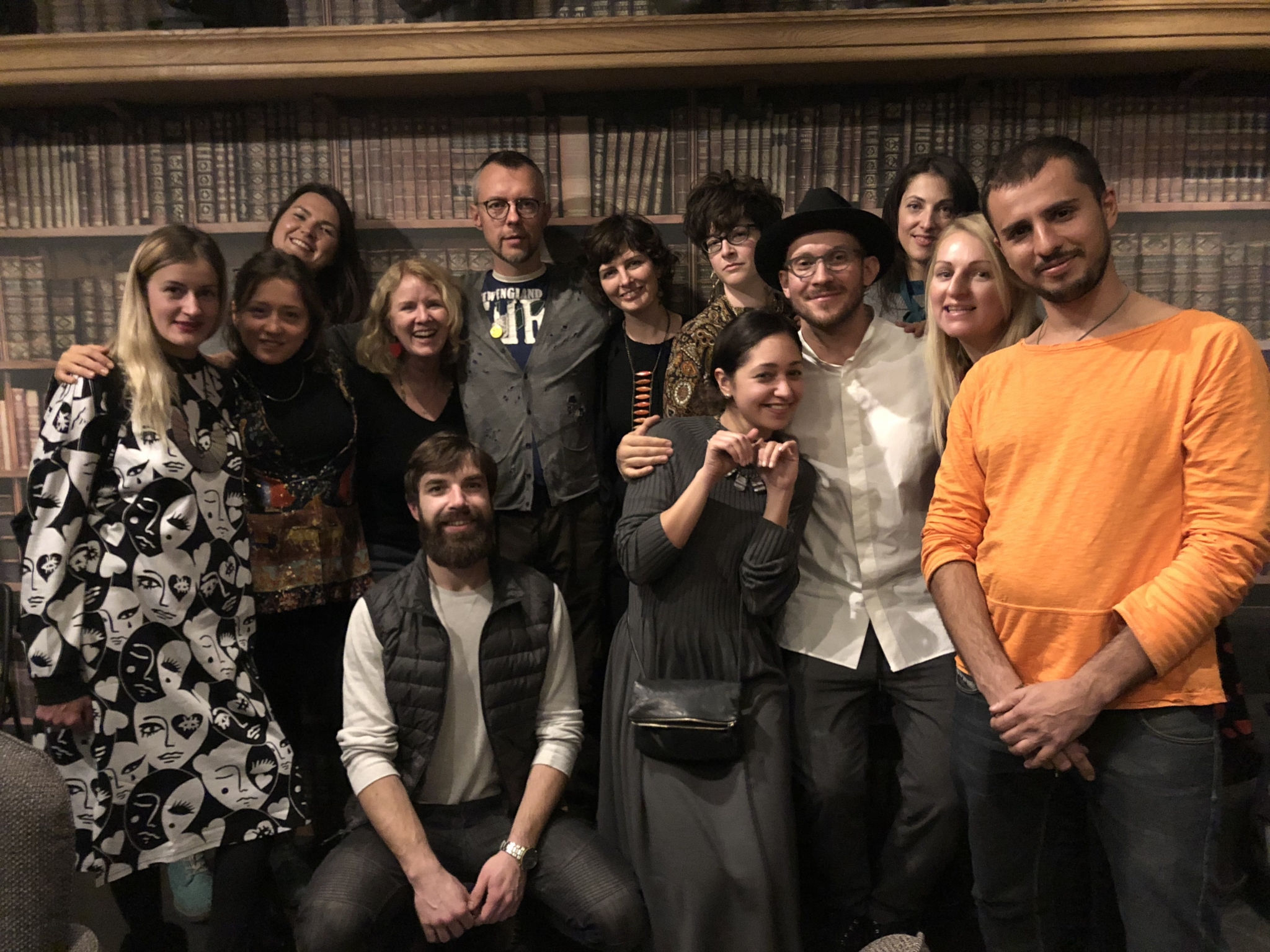
Regardless of whether they’d ever made the trip to Black Rock City, they all shared a similar glow. Their eyes lit up while talking about their enthusiasm for being able to connect with like-minded creative people through participation. It was a powerful reminder of the fact that Burning Man is not based on an event, but on a series of ideas that bring people together.
To witness this glow halfway around the world, in a country which at that moment was (and continues to be) embroiled in global political tensions was moving. It’s the kind of thing that tugs on our heartstrings in a way that reminds us they connect to our throats. Marian, Kelly and I took turns holding back tears. One said, “every dream I see has a Burning Man background.” Yep. We have those dreams, too.
Creating Through Burning
Our visit to Nikola-Lenivets, a 1600-acre site 3.5 hours outside of Moscow, was a highlight of the trip. The space is home to 28 large-scale site specific artworks, year-round events, and residency programs for artists. Its mission is to “create a natural self-regulated environment for life, recreation, art and work in harmony with nature.” It’s not hard to see that this place rhymes with what we do in the desert.
By happy coincidence, our trip coincided with a Russian holiday called Maslenitsa, (a.k.a. pancake week!), which celebrates the end of winter and the beginning of Lent, and involves a tradition of burning a wooden figure of a woman. This burning part obviously piqued our interest (though at Nikola-Lenivets, the effigy was more reminiscent of a temple than a human figure).
Before the burn, we met with Nikola-Lenivets founder, Nikolay Polissky. He shared some familiar observations and inspiring thoughts. “It’s a challenge to help authorities understand that the burning of art is not about destroying something,” he said. “It’s about creating something through the burn itself. The form you see is not really the thing. It comes alive through burning.” Right on.
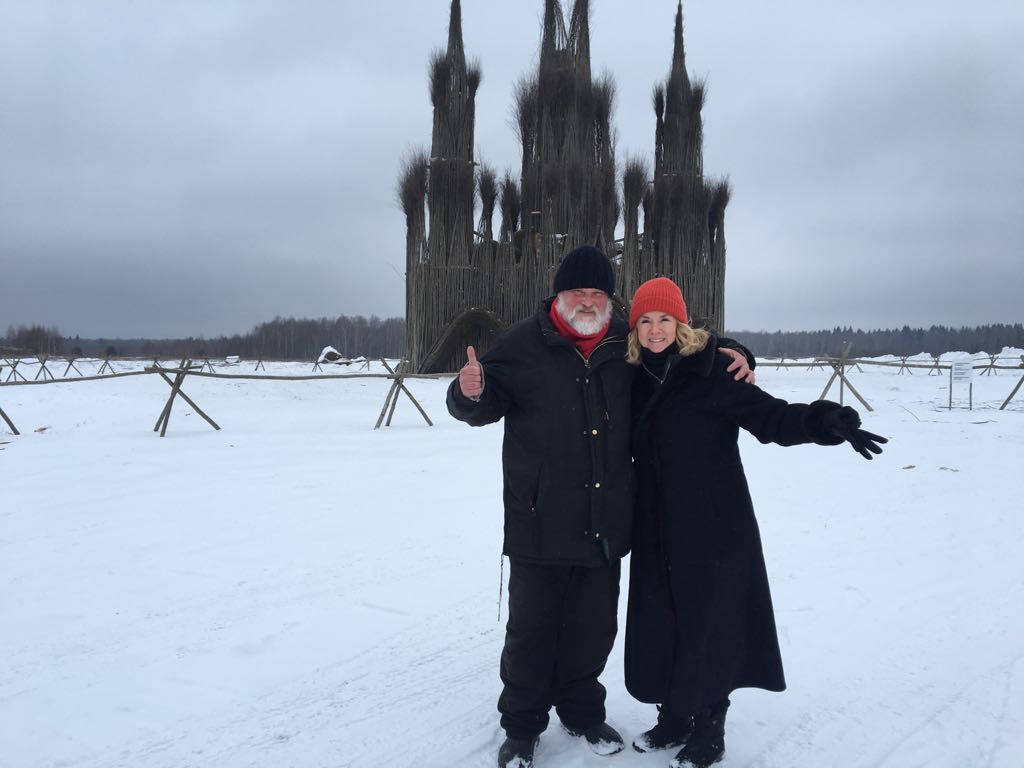
Nikola-Lenivets is right on with the civic stuff, too. “The social aspect is the most important component of what we’re doing,” Nikolay’s son told us. “Putting people to work from the community. Teaching skills to locals. Creating a tighter knit community through shared work and play.”
Later that evening, more than 1,500 people gathered for the burn. Mulled wine, apple cider, sausages, and more pancakes were enjoyed. There was a ritualistic performance led by an artist named German Vinogradov, and then the towering wooden form was lit.
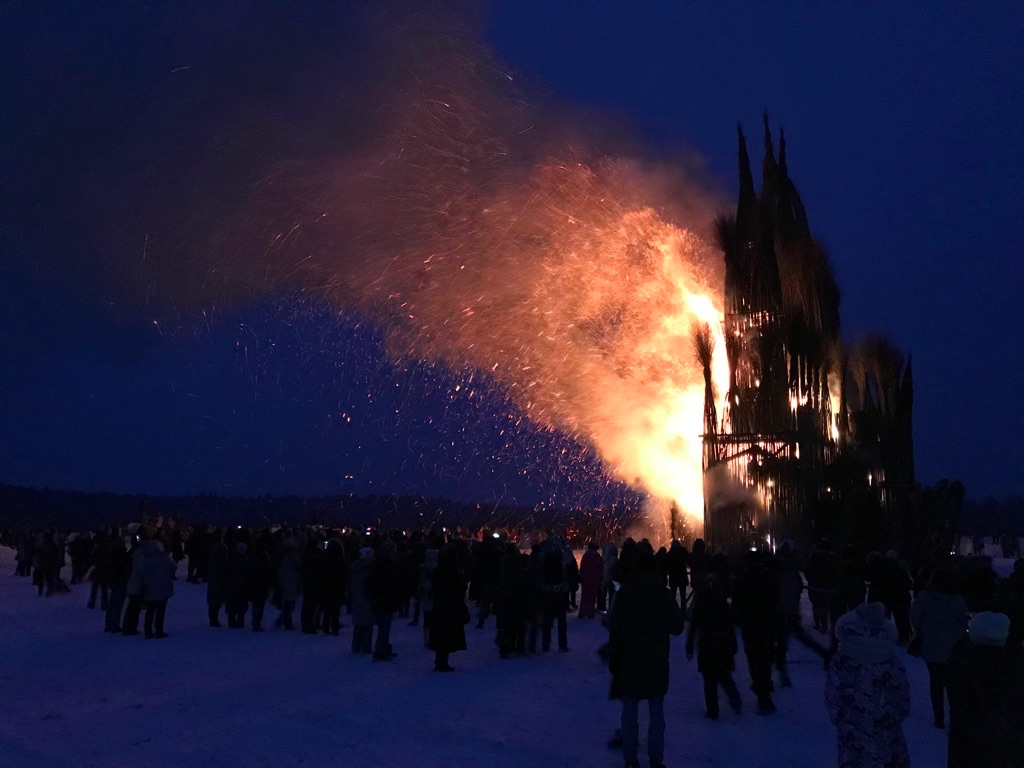
Looking around the circle, hearing shouts of joy in Russian and celebrating with our new friends through music, art, and the connective power of shared experiences, the world felt, at least for a moment, profoundly smaller and somehow more intimate.
Perhaps this goes without saying, but it was a beautiful burn.
Team Building for the World
At the conference, Marian was asked, “What is the purpose of Burning Man?” Her answer was clear: “to create positive social change.” Anna Glukhova, one of the young women that accompanied us, summed it up nicely: “Burning Man is team building for the world.” And the world needs it.
Visiting Russia in such tumultuous times was fascinating and affirming. Despite the political differences between our nations, on a personal level we connect and relate simply as humans. Across ethnic, cultural, religious, and political lines, as Miss Kelly put it, “Burning Man transcends the differences that divide us.” It was powerful to be reminded of that.
Top photo by Megan Miller

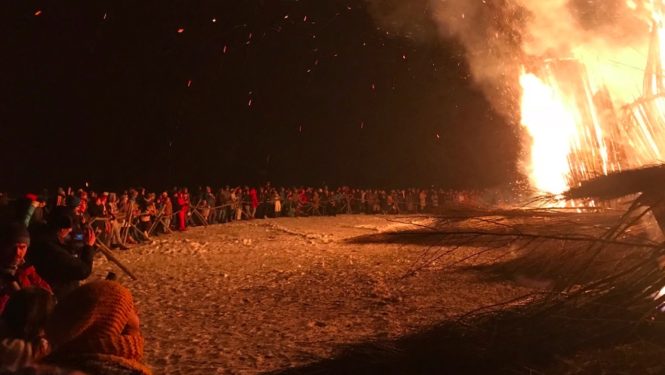
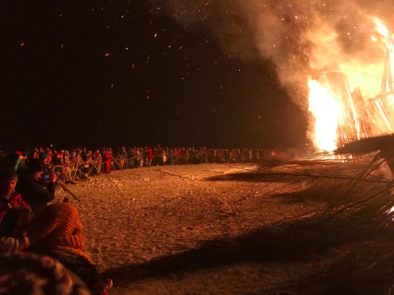
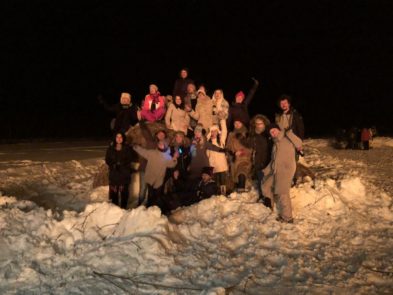
Hopefully anyone wishing to come from Russia this year already has their visas. Most of the consulate/embassy staff in Russia has been recalled and the priority is given first and foremost to immigration matters. Things like tourist and even business visas are put on a back burner. If you don’t already have a visa, and have not yet applied, you’re likely SOL at this point.
Report comment
Comments are closed.